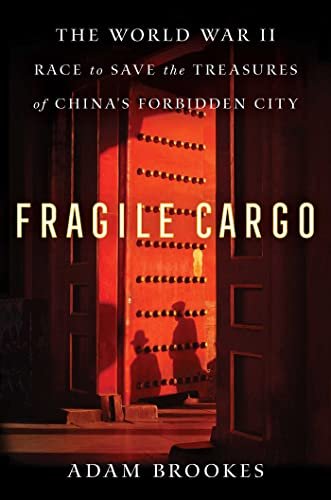This history thriller by Adam Brookes tells the story of how 250,000 priceless works of art – porcelain, silks, paintings, sculpture – were rescued from the Forbidden City in China and transported some 15,000 miles across mountain ranges and down rivers by raft, lorry and rail during civil wars and famine.
In his Prelude, Brookes describes the treasures of the Forbidden City in 1765 under the reign of Quianlong, the sixth emperor of the Qing dynasty that ruled China for most of three centuries. “These are not collections in the way a European art collector might understand the word. Many objects are not decorative but functional. Fine porcelain from the imperial kilns might be used at the alter of an elaborate Confucian or Buddhist ritual, ancient bronze bells for sacred music. Calligraphy provides moral and aesthetic example. Painting depicts the universe and acquaints the emperor with his subjects. Bronze vessels bear inscriptions dating from deep antiquity that contain philosophical or metaphysical significance. The collections are tightly entwined with the majesty and legitimacy of the emperor’s rule. Qianlong… does not conceive of himself as viewing what we think of as fine art. He sees in these objects the physical manifestation of a higher cosmic order, their beauty and complexity nourishing and strengthening his sense of his own centrality to the universe. In the stroke of the brush, in the fall of light on worked jade, Qianlong discerns the shape of time, the pulse of power.”
With cinematic intensity, Brookes recounts the epic tale of how curators, archaeologists, scholars and politicians protected irreplaceable artistic treasures amid the turmoil of early 20th-century China by moving them some 15,000 miles by train, boat, lorry, and raft up rivers and across mountain ranges during famine and war.
